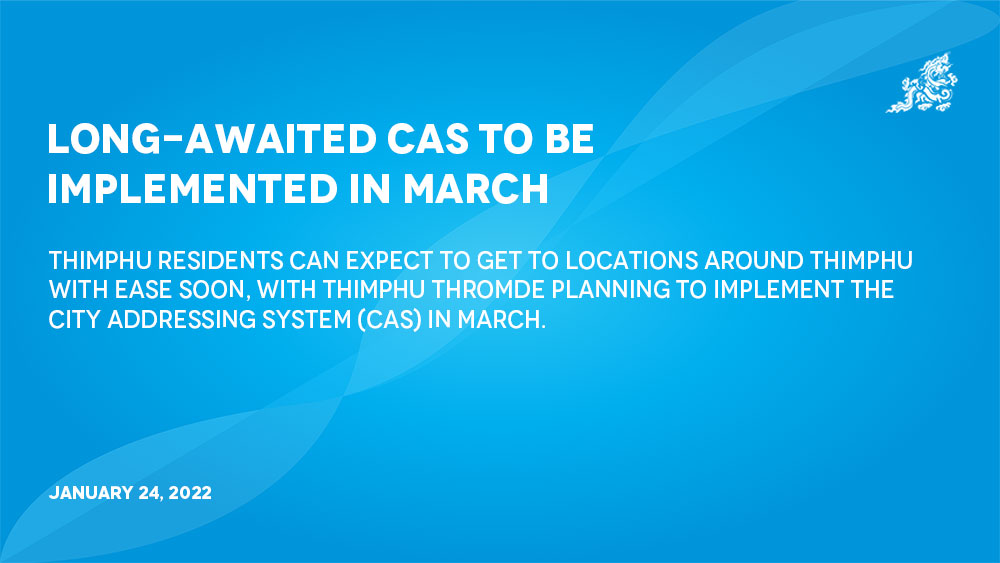Yangyel Lhaden
Thimphu residents can expect to get to locations around Thimphu with ease soon, with Thimphu thromde planning to implement the city addressing system (CAS) in March.
The CAS database will be uploaded to Google Maps. The thromde office is currently finalising the digital components and developing guidelines for the system.
Thimphu thromde Geographic Information Officer (GIS), Sonam Zangmo said that with Internet connectivity, they can upload the CAS database onto several platforms based on the preference and convenience of users. They want the platform to be suitable not only for local residents but also for international tourists. “In March, we will upload it to Google Maps, as it is a widely used platform.”
Sonam Zangmo said that the budget for CAS infrastructure development will be finalised closer to the time of its implementation. “Type, design, and installation of street signage will be carried out after determining the budget.”
She said that the format and placement for these street signages needed to be strategic and based on certain international standards. “There are many things to consider when installing signs, such as their visibility, and the average speed of cars in the area.”
Building owners are required to get their building and flat number from application, or from the thromde office after the CAS information has been disseminated to the public from the thromde and the data is uploaded to Google Maps.
Sonam Zangmo said that building owners will be responsible for numbering and installing number signboards, and the thromde will provide a standard for the signage.
She said that the numbering of units will have to be updated yearly with the issuance of occupancy certificates. “Since the residents and use of units are constantly changing, we will work with the Development Regulatory Division of Thimphu thromde to update flat and unit numbers. We have also developed guidelines.”
Beginning in March, residents will have to update their addresses for services provided by Thimphu thromde, such as water and sewage bills, in accordance with the CAS.
Sonam Zangmo said that the thromde office will reach out to financial institutions and Royal Civil Service Commission to request that the public update their addresses within their system. “This is being done mainly to familarise the public with the CAS.”
She said the efficiency of the CAS will depend on public use, as no matter how much a system is improved, it won’t have value if people don’t use it. “We have to encourage people to use the CAS and update their addresses, because there are many benefits in terms of providing door-to-door services, emergencies, and for service providers to address complaints.”
Sonam Zangmo said that the GIS team have reviewed all the different types of streets and existing street names, with provisions for future developments such as construction. “We also kept provisions for other dzongkhags, as what is done in Thimphu is usually replicated in other dzongkhags as well.”
She said that there are provisions for other dzongkhags for areas that might not be fully developed or areas that don’t have plans or roads as of yet, which is the case for most rural parts of the country, in the event that they are developed eventually.
The GIS team identified physical features or references to be used as reference points in the future. Sonam Zangmo said that reference points are essential because they are used to number the entire city. “We are using a baseline to identify and classify streets.”
She said that with the current CAS system, they have tried to ensure continuity and longevity of the CAS, as it has to remain relevant irrespective of eventual handover.
The GIS team is also working on a road database to study traffic flow for emergency services and general traffic circulation, which will be incorporated in the CAS.


